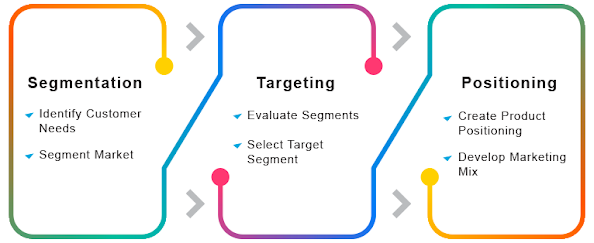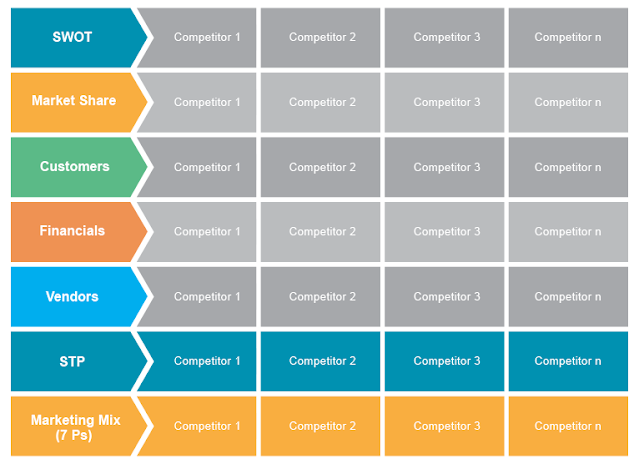Continuing our discussion of competitive analysis, in this second part, we go into a more detailed analysis of competitors. In part I, we recommended selecting a diverse list of competitors to examine. After performing a SWOT analysis and gathering information about them such as their market share, customers, financials, and vendors, a more detailed analysis would provide further insight. It can help you in finding a better marketing positioning and creating your marketing plan.
A more detailed analysis
In this article, we will examine competitors in more detail especially in relation to STP (segmentation, targeting, and positioning) and the marketing mix. The discussion assumes you have a good grasp of these concepts, but at this point, we discuss them at a higher level and in relation to competitive analysis. The topics of STP planning and the marketing mix will be covered in more detail when we discuss market planning in a subsequent article as part of the Key Business Concepts 101 article series.
 |
| Figure 1 - Evaluating Competition |
Relative to your STP
Another area where competitive analysis helps you improve is your STP plan. Knowing what segments your competitors target and how they position their products/services can help you decide where you want to be in your market. After all, your product/service positioning is all relative to your industry and market competition.
Here is a quick recap of STP:
- Segmentation: Identify current customer needs and based on that segment of customers.
- Targeting: Evaluate customer segments and select which of these segments you are going after.
- Positioning: create the positioning of product/service relative to the targeted market, targeted customer segments, and competition. Then develop the marketing mix suitable for your product/service offerings.
This brings us to the topic of the marketing mix.
 |
| Figure 2 - STP Process |
Your competitors marketing mix
One way to analyse your key competitors is to evaluate them from the perspective of the marketing mix. That is, from the perspective of the 7Ps of Product, Price, Promotion, Place, People, Process, and Physical Evidence. While you should not be copying them, knowing these aspects about your competitors can guide you to choosing the right marketing mix for your business.
Your customers will evaluate your product offerings against what your competitors offer. Therefore, you need to know as much as possible about the specification of their products such as features, quality, prices, etc. Your product and its price need to be competitive; you need to use a solid distribution strategy to compete successfully, and your marketing messages need to consider your industry, market, and competition. Moreover, the people you hire, the process you use, and the physical evidence you create will need to consider these factors as well as be led by what others are already doing. At minimum, this would serve as a starting point from which you can improvise and improve based on your own strategy, business plans, and targeted market needs.
To Conclude
We have covered competitive analysis at several levels and from different aspects. We started with an overview of the industry and general market details then moved to analyse market, industry, and competition using Porter’s Five Forces framework. We then did an analysis of key competitors based on general information such as market share and financial standing. A more detailed competitive analysis approach was presented next to be used with your market planning and to help you create a robust marketing plan. The detailed analysis focused on the STP plan, and the marketing mix.
We will discuss STP and the marketing mix in detail when we discuss market planning in a future article as part of the Core Business Concepts 101 series. However, this article concludes our discussion of competitive analysis, for our next article in this series, we will cover a prominent framework in business management, the Balanced Scorecard.
See you then!



No comments:
Post a Comment